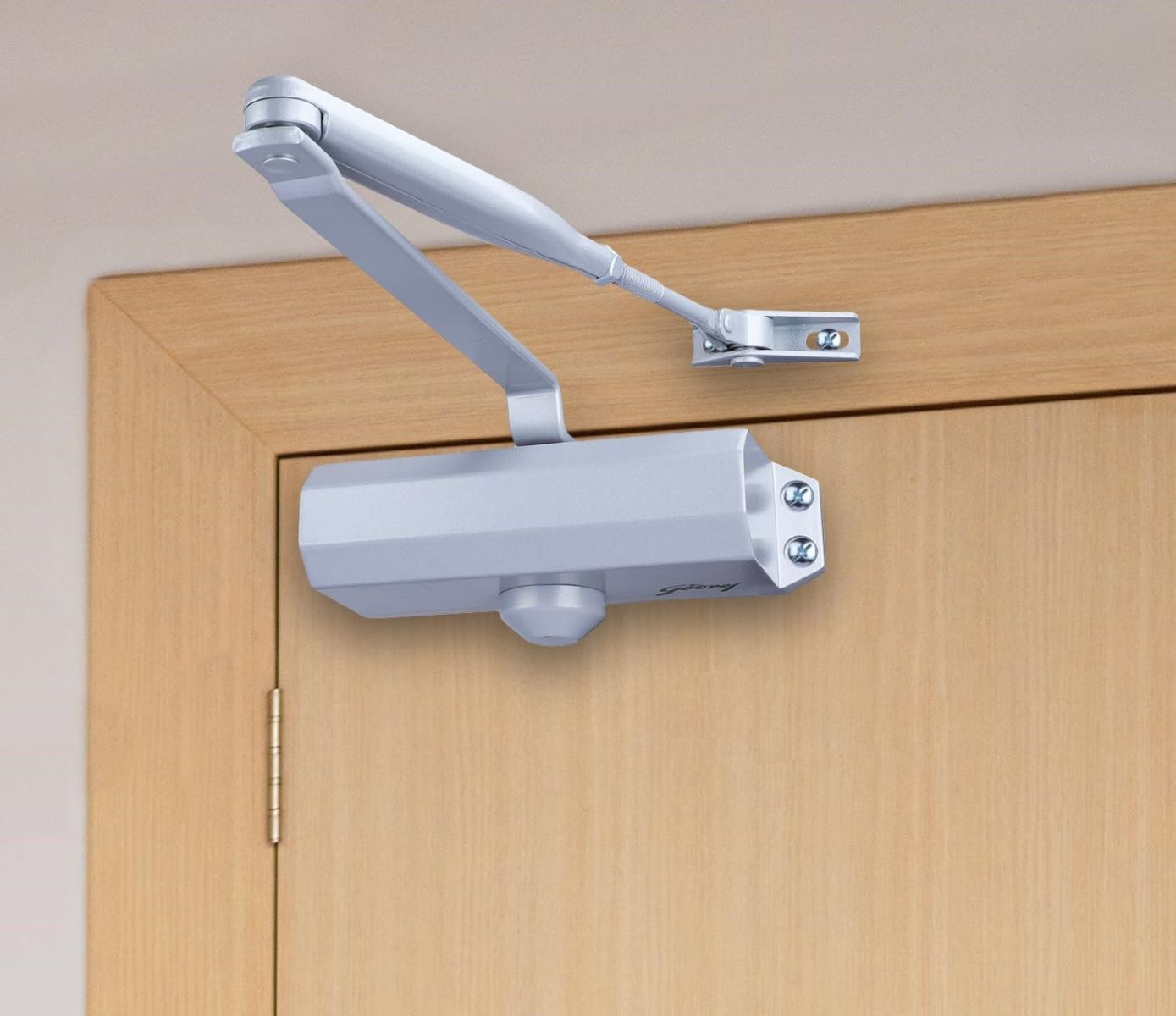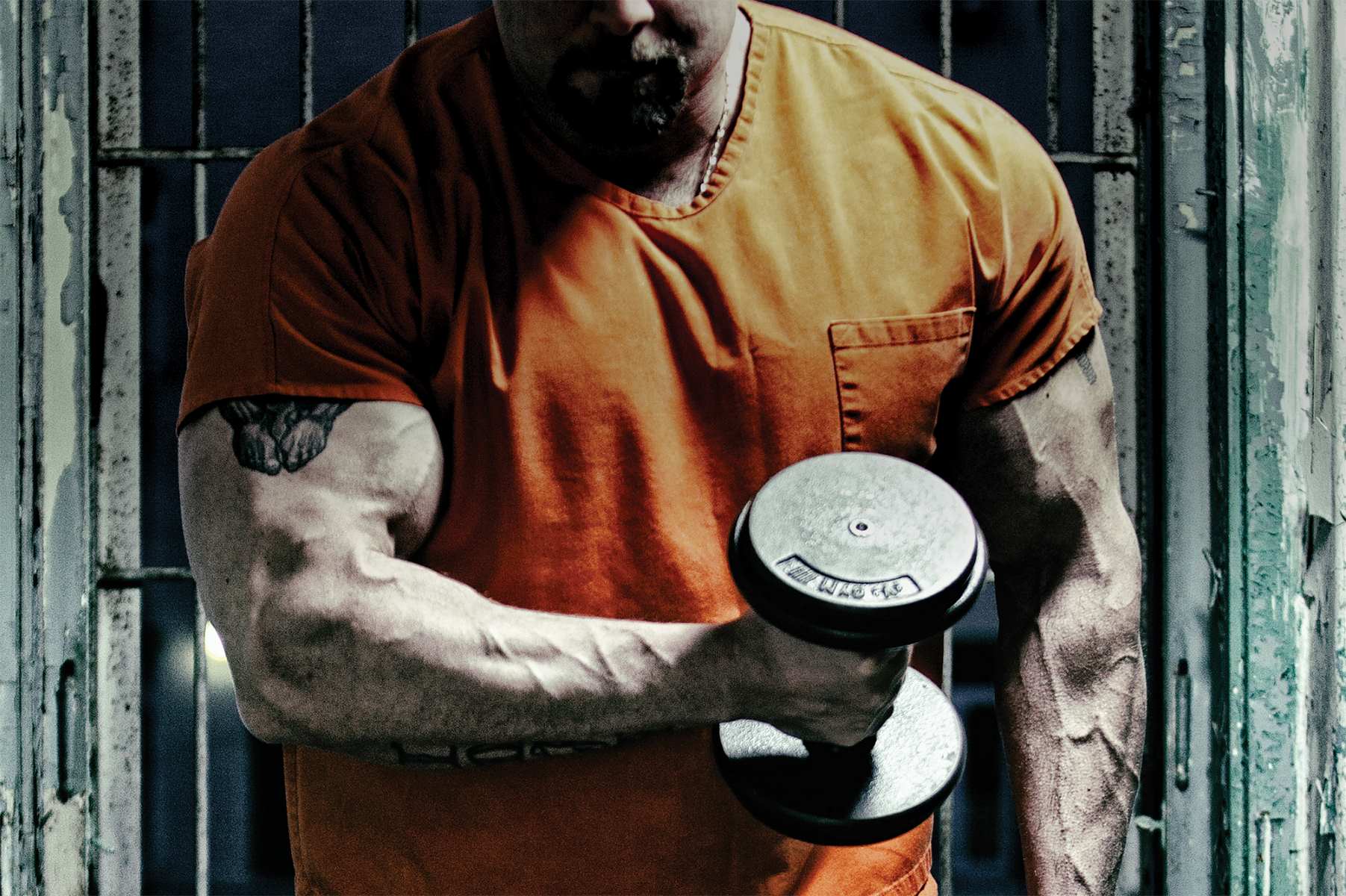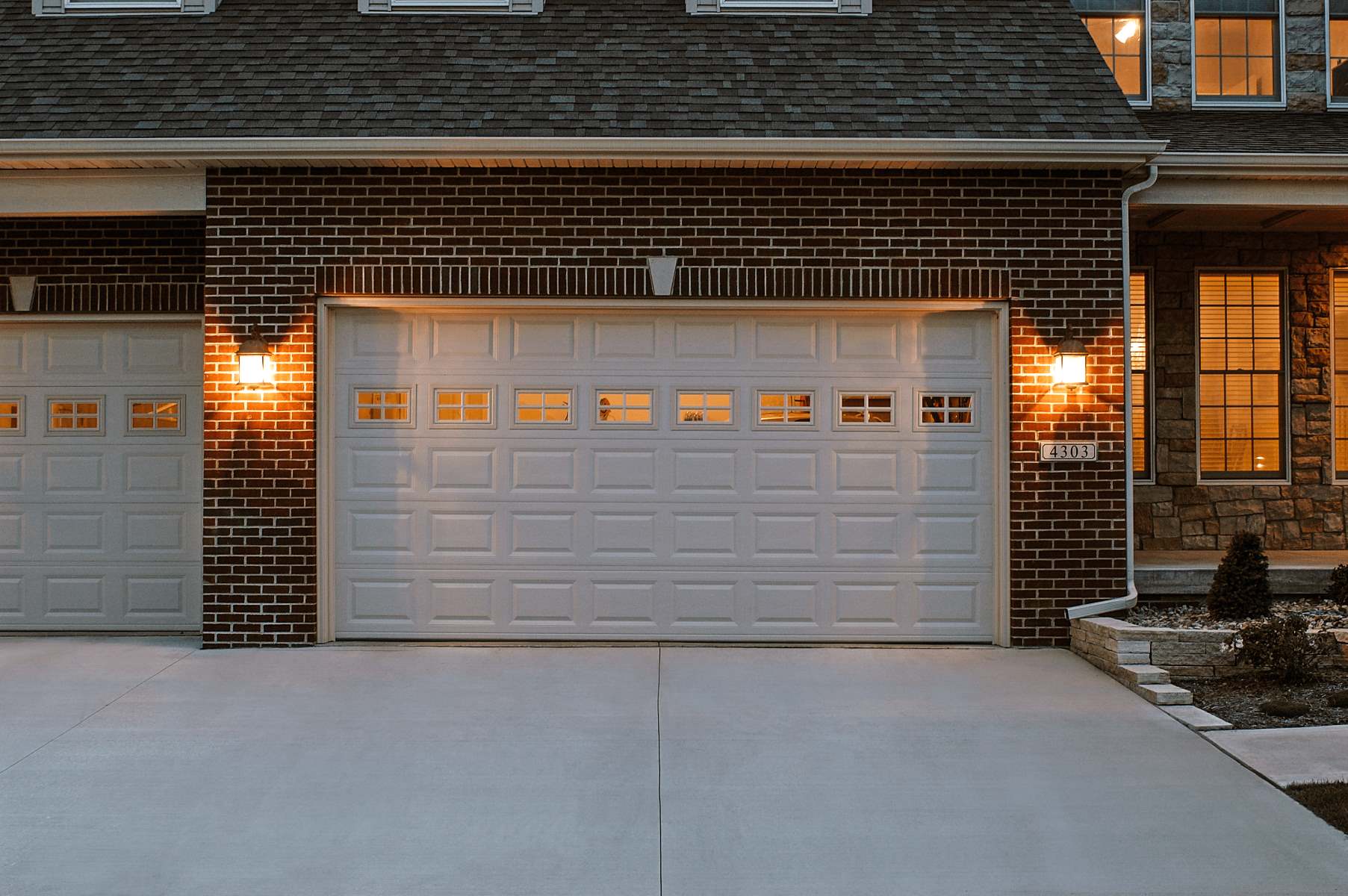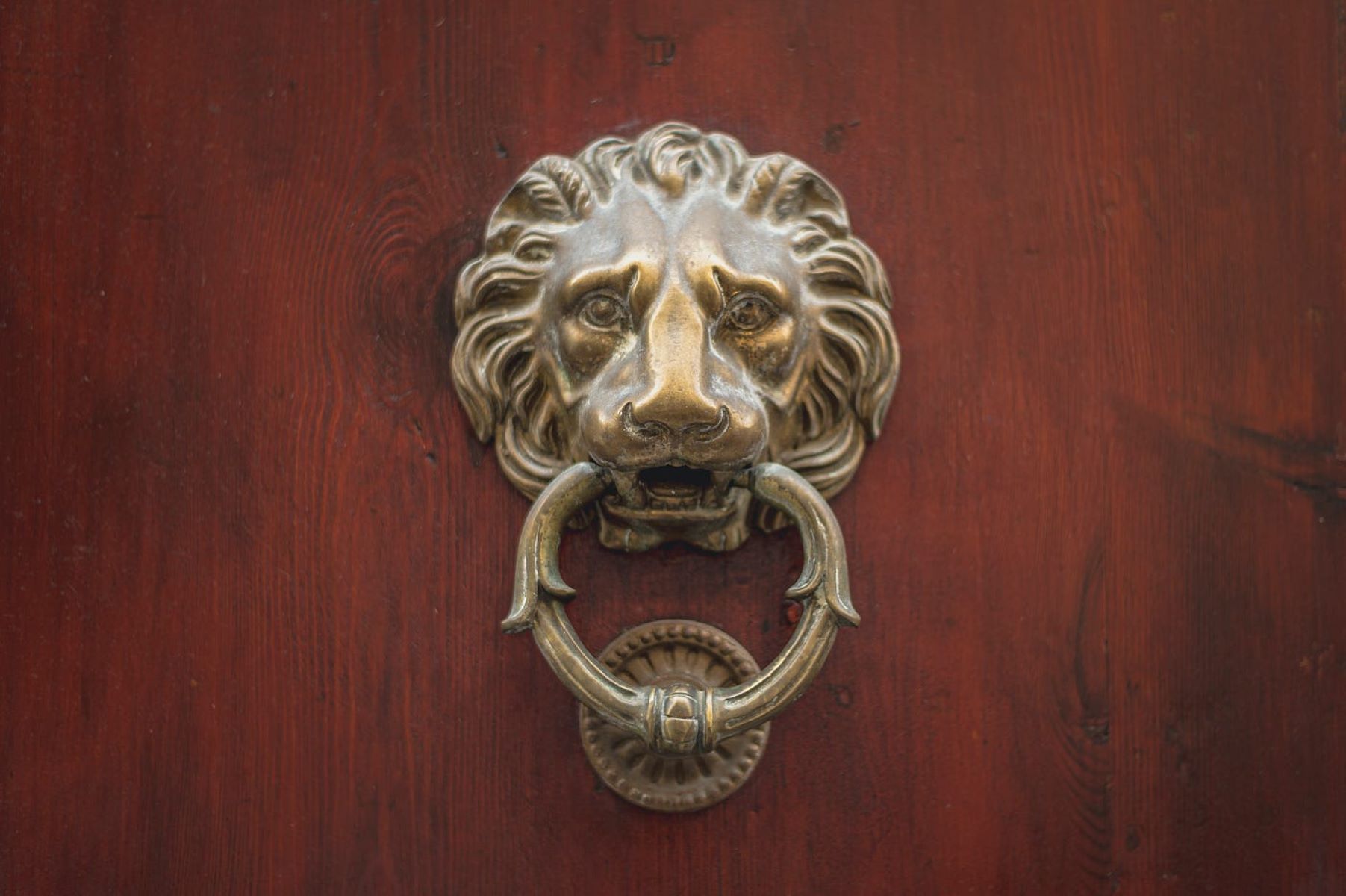Home>Home and Garden>Adjusting The Strength And Power Of A Door Closer: A Step-by-Step Guide


Home and Garden
Adjusting The Strength And Power Of A Door Closer: A Step-by-Step Guide
Published: February 19, 2024
Learn how to adjust the strength and power of a door closer with our step-by-step guide. Enhance your home and garden with these simple tips.
(Many of the links in this article redirect to a specific reviewed product. Your purchase of these products through affiliate links helps to generate commission for Regretless.com, at no extra cost. Learn more)
Table of Contents
Introduction
Adjusting the strength and power of a door closer is an essential aspect of maintaining a safe and functional entryway. A door closer is a mechanical device that automatically closes a door after it has been opened. It plays a crucial role in ensuring that doors close securely and efficiently, preventing unnecessary drafts, maintaining indoor temperatures, and enhancing security.
Understanding the mechanisms of a door closer and knowing how to adjust its strength and power can significantly improve its performance and longevity. Whether it's a hydraulic door closer or a pneumatic one, being able to fine-tune its operation ensures that it functions optimally, providing smooth and controlled closing action.
In this comprehensive guide, we will delve into the intricacies of adjusting the strength and power of a door closer. By following the step-by-step instructions and gaining insights into the tools and materials required, you will be equipped to tackle this task with confidence. Whether you are a homeowner, a maintenance professional, or a DIY enthusiast, mastering the art of adjusting a door closer will empower you to maintain a safe and efficient entryway.
Let's embark on this journey to unlock the secrets of door closer adjustment, ensuring that every entry and exit is accompanied by the reassuring click of a securely closed door.
Understanding the Door Closer
A door closer is a vital component of any building's entryway, serving the crucial function of ensuring that doors close securely and reliably. It consists of a hydraulic or pneumatic mechanism that controls the closing of the door, preventing it from slamming shut and providing a smooth and controlled closing action. Understanding the key components and operation of a door closer is essential for effectively adjusting its strength and power.
Components of a Door Closer
Body
The body of a door closer houses the critical components that control the door's movement. It is typically installed at the top of the door and contains the hydraulic or pneumatic mechanism responsible for regulating the door's closing speed and strength.
Arm
The arm of a door closer connects the body to the door and facilitates the controlled movement of the door during opening and closing. There are various types of arms, including regular, parallel, and top jamb arms, each suited for different door configurations.
Adjustment Screws
Most door closers feature adjustment screws that allow for fine-tuning the closing speed and spring tension. These screws are instrumental in customizing the door closer's operation to suit specific requirements.
Operation of a Door Closer
When a door is opened, the door closer's mechanism is engaged, storing energy to facilitate the controlled closing of the door. The hydraulic or pneumatic components regulate the speed at which the door closes, ensuring a smooth and consistent motion. Additionally, the spring tension within the door closer influences the force required to open the door and controls the speed of closing.
Types of Door Closers
There are various types of door closers, including surface-mounted, concealed, and overhead door closers, each designed to accommodate different door configurations and aesthetic preferences. Surface-mounted door closers are the most common and are visible when the door is open, while concealed door closers are installed within the door and frame for a seamless appearance.
Understanding the intricacies of a door closer, from its components and operation to the different types available, provides a solid foundation for effectively adjusting its strength and power. With this knowledge in hand, you are ready to embark on the journey of fine-tuning the performance of a door closer to ensure optimal functionality and safety.
Assessing the Strength and Power
Assessing the strength and power of a door closer is a fundamental step in ensuring that it functions optimally. The strength of a door closer refers to the force it exerts to close the door, while the power relates to the speed at which the door closes. Understanding these aspects is crucial for determining whether the door closer requires adjustment and identifying the specific areas that need fine-tuning.
To assess the strength of the door closer, observe the force required to open and close the door. A properly adjusted door closer should provide enough force to close the door securely without exerting excessive pressure when opening. If the door slams shut or fails to close completely, the strength of the door closer may need adjustment. Similarly, if the door closes too slowly or fails to latch properly, the power of the door closer may require fine-tuning.
Additionally, inspect the overall movement of the door when opened and closed. A well-adjusted door closer should facilitate smooth and controlled motion, ensuring that the door closes securely without abrupt or erratic movements. Any irregularities in the door's movement, such as jerking or hesitating during closing, may indicate that the strength and power of the door closer need to be assessed and adjusted.
By carefully evaluating the force and speed at which the door closes, you can gain valuable insights into the performance of the door closer. This assessment serves as the foundation for identifying the specific adjustments required to optimize the strength and power of the door closer, ultimately enhancing its functionality and reliability.
Understanding the nuances of assessing the strength and power of a door closer empowers you to proactively address any performance issues, ensuring that the entryway operates smoothly and securely. With a keen eye for detail and a thorough assessment of the door closer's strength and power, you are well-prepared to embark on the subsequent steps of adjusting its operation to achieve optimal functionality.
Tools and Materials Needed
Before embarking on the process of adjusting the strength and power of a door closer, it is essential to gather the necessary tools and materials to facilitate a smooth and efficient adjustment process. Equipping yourself with the right tools ensures that you can effectively fine-tune the operation of the door closer, optimizing its performance to meet specific requirements.
Tools
-
Screwdriver Set: A set of screwdrivers, including flathead and Phillips head varieties, is essential for accessing and adjusting the screws on the door closer. Different door closers may require specific types of screwdrivers, so having a versatile set ensures that you can accommodate various models.
-
Adjustable Wrench: An adjustable wrench is useful for securing and adjusting certain components of the door closer, providing the necessary leverage to tighten or loosen bolts and nuts as needed.
-
Hex Key Set: Many door closers feature adjustment screws that require a hex key for precise tuning. Having a set of hex keys in different sizes allows for seamless adjustment of these screws to achieve the desired settings.
-
Safety Glasses: When working with door closers, especially during adjustment procedures, wearing safety glasses is crucial to protect your eyes from any potential debris or dislodged components.
Materials
-
Lubricant: A high-quality lubricant, such as silicone-based or graphite spray, is essential for maintaining the smooth operation of the door closer. Applying lubricant to the moving parts and hinges helps reduce friction and ensures consistent performance.
-
Cleaning Supplies: Before adjusting the door closer, it is beneficial to have cleaning supplies on hand to remove any dirt, debris, or old lubricant from the door closer and its components. This may include a rag, mild detergent, and a brush for thorough cleaning.
-
Adjustment Manual: If available, referring to the door closer's adjustment manual or documentation can provide valuable insights into the specific adjustment procedures and recommended settings for optimal performance.
By assembling these tools and materials, you are well-prepared to embark on the process of adjusting the strength and power of the door closer. With the right equipment at your disposal, you can approach the adjustment task with confidence, knowing that you have everything needed to fine-tune the door closer's operation effectively.
Step 1: Identifying the Adjustment Screws
The first step in adjusting the strength and power of a door closer involves identifying the adjustment screws that govern its operation. These screws are pivotal in fine-tuning the closing speed and spring tension, allowing for precise customization to meet specific requirements. By locating and understanding the function of these adjustment screws, you lay the groundwork for effectively optimizing the performance of the door closer.
Locating the Adjustment Screws
Adjustment screws are typically located on the body of the door closer, near the hinge or the hydraulic/pneumatic mechanism. They may be labeled as "closing speed" and "latch speed" screws, indicating their respective functions in regulating the door closer's operation. In some cases, there may be additional screws for adjusting the spring tension, providing comprehensive control over the door closer's strength and power.
Understanding the Functions
The closing speed screw governs the rate at which the door closes, allowing for adjustments to achieve a smooth and controlled closing action. Turning this screw clockwise generally increases the closing speed, while turning it counterclockwise reduces the speed. The latch speed screw, if present, controls the speed at which the door latches after closing, ensuring a secure and consistent latching action.
If the door closer features spring tension adjustment screws, they enable customization of the force required to open the door and influence the speed of closing. By tightening the spring tension, the door closer exerts more force, resulting in a faster closing speed. Conversely, loosening the spring tension reduces the force and slows down the closing speed.
Precautions and Documentation
Before proceeding with adjusting the screws, it is advisable to refer to the door closer's manual or documentation, if available. This provides valuable insights into the specific location and function of the adjustment screws, ensuring that you approach the adjustment process with clarity and confidence. Additionally, taking note of the initial positions of the screws allows for easy restoration to the original settings if needed.
Identifying the adjustment screws sets the stage for the subsequent steps in adjusting the strength and power of the door closer. With a clear understanding of their locations and functions, you are ready to proceed to the next phase of fine-tuning the door closer's operation to achieve optimal functionality and performance.
Step 2: Adjusting the Spring Tension
Fine-tuning the spring tension of a door closer is a critical aspect of adjusting its strength and power. The spring tension directly influences the force required to open the door and plays a pivotal role in controlling the speed of closing. By adjusting the spring tension, you can customize the door closer's operation to suit specific requirements, ensuring a balanced and controlled closing action.
Understanding the Impact of Spring Tension
The spring tension adjustment screw, often located on the body of the door closer, governs the force exerted by the door closer during the closing process. By tightening the spring tension, the door closer exerts more force, resulting in a faster closing speed. Conversely, loosening the spring tension reduces the force, slowing down the closing speed. Understanding the impact of spring tension on the door closer's operation is essential for achieving the desired closing action.
Adjustment Procedure
-
Identify the Spring Tension Screw: Locate the spring tension adjustment screw on the body of the door closer. It is often distinguishable by its position and may be labeled for clarity.
-
Initial Assessment: Before making any adjustments, observe the current performance of the door closer. Note the speed and force of closing to determine the required changes in spring tension.
-
Adjustment Direction: Depending on the specific requirements, determine whether the spring tension needs to be increased or decreased. Turning the screw clockwise typically increases the tension, while turning it counterclockwise reduces the tension.
-
Gradual Adjustments: Use a suitable tool, such as a hex key or screwdriver, to make gradual adjustments to the spring tension screw. Turn the screw in small increments to achieve precise customization, avoiding abrupt changes that may impact the door closer's performance.
-
Testing: After each adjustment, test the door closer to assess the impact of the changes. Observe the closing speed and force, ensuring that the door closes smoothly and securely without exerting excessive pressure.
-
Iterative Process: Fine-tune the spring tension through iterative adjustments, making minor changes as needed to achieve the optimal balance of force and speed during closing.
Precautions and Considerations
-
Refer to Documentation: If available, refer to the door closer's manual or documentation for specific guidelines on adjusting the spring tension. This ensures that you adhere to the manufacturer's recommendations and avoid potential issues.
-
Restore Original Settings: Take note of the initial position of the spring tension screw before making adjustments. This allows for easy restoration to the original settings if the changes do not yield the desired results.
By following these detailed steps and exercising caution during the adjustment process, you can effectively fine-tune the spring tension of the door closer, optimizing its strength and power to deliver a smooth and controlled closing action.
Step 3: Adjusting the Closing Speed
Fine-tuning the closing speed of a door closer is a crucial aspect of optimizing its performance and ensuring a controlled and secure closing action. The closing speed adjustment governs the rate at which the door closes after being opened, allowing for precise customization to meet specific requirements. By adjusting the closing speed, you can achieve a balanced and consistent motion, enhancing the functionality of the door closer.
Understanding the Impact of Closing Speed
The closing speed of a door closer directly influences the manner in which the door closes, affecting factors such as safety, convenience, and energy efficiency. A properly adjusted closing speed ensures that the door closes smoothly and securely, preventing abrupt slamming or slow, inefficient closure. Understanding the impact of closing speed on the overall operation of the door closer is essential for achieving optimal functionality.
Adjustment Procedure
-
Locate the Closing Speed Screw: Identify the closing speed adjustment screw on the body of the door closer. It is often labeled for clarity and may be positioned near the hydraulic or pneumatic mechanism.
-
Initial Assessment: Before making any adjustments, observe the current closing speed of the door. Note the rate at which the door closes to determine the required changes in the closing speed.
-
Adjustment Direction: Depending on the specific requirements, determine whether the closing speed needs to be increased or decreased. Turning the screw clockwise generally increases the closing speed, while turning it counterclockwise reduces the speed.
-
Gradual Adjustments: Use a suitable tool, such as a screwdriver or hex key, to make gradual adjustments to the closing speed screw. Turning the screw in small increments allows for precise customization, avoiding abrupt changes that may impact the door closer's performance.
-
Testing: After each adjustment, test the door closer to assess the impact of the changes. Observe the closing speed to ensure that the door closes smoothly and securely without any abrupt or erratic movements.
-
Iterative Process: Fine-tune the closing speed through iterative adjustments, making minor changes as needed to achieve the optimal rate of closure.
Precautions and Considerations
-
Refer to Documentation: If available, refer to the door closer's manual or documentation for specific guidelines on adjusting the closing speed. This ensures that you adhere to the manufacturer's recommendations and avoid potential issues.
-
Restore Original Settings: Take note of the initial position of the closing speed screw before making adjustments. This allows for easy restoration to the original settings if the changes do not yield the desired results.
By following these detailed steps and exercising caution during the adjustment process, you can effectively fine-tune the closing speed of the door closer, optimizing its performance to deliver a smooth and controlled closing action.
Step 4: Testing the Door Closer
After adjusting the spring tension and closing speed of the door closer, it is essential to thoroughly test its performance to ensure that the adjustments have achieved the desired results. Testing the door closer involves evaluating its closing action, latching efficiency, and overall functionality to confirm that it operates smoothly and securely.
Closing Action Evaluation
Begin by opening the door and allowing the door closer to engage. Observe the closing action as the door gradually returns to its closed position. Pay close attention to the speed and consistency of the closing motion, ensuring that it is smooth and controlled. If the door closes too quickly or sluggishly, further adjustments may be necessary to achieve the optimal closing speed.
Latching Efficiency Assessment
As the door nears its closed position, assess the latching efficiency of the door closer. Ensure that the door latches securely without requiring excessive force. A well-adjusted door closer should facilitate a seamless latching action, ensuring that the door remains closed without any gaps or instability. If the door fails to latch properly or exhibits irregular latching behavior, additional adjustments may be warranted to optimize the latching efficiency.
Overall Functionality Check
Test the door closer under various conditions, including different opening angles and force exerted on the door. Verify that the door closer consistently delivers a controlled closing action, regardless of the opening angle or external influences. Additionally, assess the overall functionality of the door closer, ensuring that it operates reliably and efficiently in real-world scenarios.
Iterative Adjustments
Based on the observations during testing, consider making iterative adjustments to fine-tune the door closer's performance. If the closing action is not optimal or the latching efficiency is compromised, revisit the adjustment screws to make minor refinements. By iteratively adjusting the door closer and testing its performance, you can achieve the desired balance of strength and power, ensuring that the entryway operates seamlessly.
Documentation and Record-Keeping
Document the final adjustment settings and any notable observations during testing. Maintaining a record of the adjusted parameters allows for easy reference in the future and facilitates troubleshooting or further adjustments if necessary. Additionally, note any specific conditions or scenarios in which the door closer may exhibit varying performance, providing valuable insights for future maintenance and optimization.
By meticulously testing the door closer and iteratively adjusting its operation, you can ensure that it functions optimally, delivering a smooth and controlled closing action. Thorough testing serves as the final validation of the adjustment process, confirming that the door closer's strength and power have been fine-tuned to meet specific requirements.
Conclusion
In conclusion, the process of adjusting the strength and power of a door closer is a fundamental aspect of maintaining a safe, efficient, and reliable entryway. By delving into the intricacies of door closer adjustment, we have gained valuable insights into the mechanisms, components, and adjustment procedures that govern the operation of this essential device.
Understanding the nuances of a door closer, from its hydraulic or pneumatic mechanism to the various adjustment screws, provides a solid foundation for effectively fine-tuning its performance. The ability to assess the strength and power of a door closer, identify the adjustment screws, and make precise adjustments to the spring tension and closing speed empowers individuals to proactively optimize the functionality of their entryways.
The comprehensive guide presented here serves as a valuable resource for homeowners, maintenance professionals, and DIY enthusiasts alike, equipping them with the knowledge and skills to maintain and adjust door closers with confidence. The step-by-step instructions, coupled with insights into the tools, materials, and precautions involved in the adjustment process, ensure that individuals can approach door closer maintenance and optimization with clarity and precision.
By meticulously testing the door closer and iteratively adjusting its operation, individuals can achieve the desired balance of strength and power, ensuring that the entryway operates seamlessly. The ability to fine-tune the door closer's performance to meet specific requirements, whether it's achieving a smooth and controlled closing action or optimizing latching efficiency, enhances the overall functionality and reliability of the entryway.
As we conclude this journey into the realm of door closer adjustment, it is essential to recognize the significance of this often-overlooked component in maintaining a secure and efficient living or working environment. The reassuring click of a securely closed door, facilitated by a well-adjusted door closer, embodies the harmony between functionality, safety, and convenience.
In essence, mastering the art of adjusting the strength and power of a door closer empowers individuals to take proactive steps in maintaining their entryways, ensuring that every open and close is accompanied by the seamless operation of this indispensable device. With the knowledge and skills gained from this guide, individuals can embark on the journey of door closer adjustment with confidence, knowing that they hold the key to a secure and reliable entryway.









